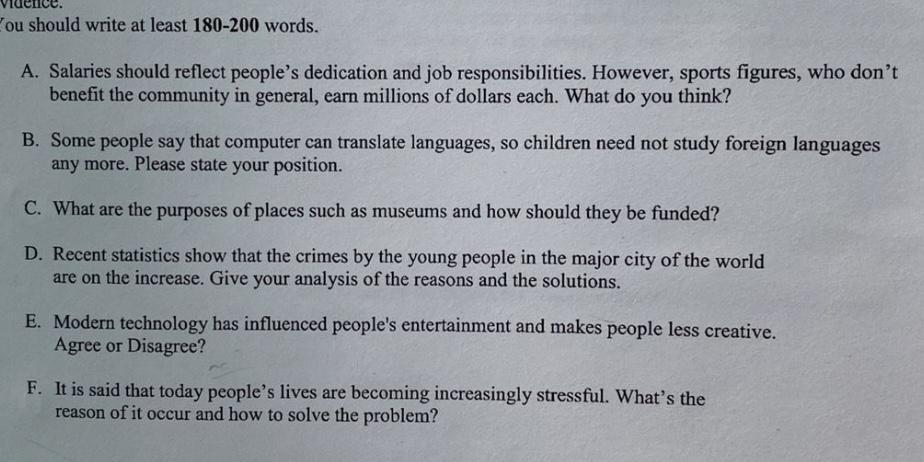СРОЧНО!! напишите пожалуйста эссе хотя бы на одну из этих тем на английском языке, даю 35 баллов (эссе 180-200 слов)

Ответы
Ответ:
Museum - an institution engaged in the collection, study, storage of monuments of natural history, material and spiritual culture. At first, this concept meant a collection of exhibits on art and science, then from a certain period of time, we will not go into details, since no one will remember it anyway and will not consider it necessary to remember, it includes the building where these monuments were located. Now there are a lot of museums, such as: local history, historical, literary, musical, natural science, theater and so on. With the development of computer technology, virtual museums have appeared. From this small explanation, we can build the answer to the question: what are they for.
There are few people who have never visited a museum at least once in their lives, if only because a person has been involved in culture since childhood. If parents do not do this, then in educational institutions visiting such institutions is included in the educational program. Sometimes, after visiting a museum, children ask the following question: “Why do we need museums?” this question can be forgiven for children, but adults should understand why a museum is needed.
To understand why museums are needed, it is necessary to understand what exactly they are - museums are memory. Therefore, in order to answer the question why they are needed, one can only say that they remember, appreciate and know. Museums represent history, so it is necessary to understand that without knowing history, it will be difficult to imagine the future, which means it will be difficult to build it.
At a certain period in the life of each person, there is a need to consider the path traveled and understand something. The appearance of museums at the moment is connected with the same. Museums arose at a time when humanity and society had a need to look back, as well as a need for self-awareness and self-knowledge. All modern museums have appeared over the past few centuries.
Museums are reliable keepers of historical memory and heritage of past eras. Museums are of great importance in our life. They reflected the life of those people who lived a long time ago and not only.
There are many different thematic museums and exhibitions in the world. Significant and not very significant, they offer their visitors to get acquainted with the exposition and form their opinion about this or that artist, sculptor, period of history or country. Among them there are those who claim unconditional leadership. These are the largest museums in the world, which have a huge impact on the rest and shape public opinion, and also act as trendsetters.
One of the most famous is the Louvre, located in Paris, the capital of France. Its exposition is located in the royal palace, built 800 years ago - and he himself can act as one of the exhibits. It represents all eras and peoples, here you can find both Assyrian bas-reliefs and modern art nouveau. In London, there is its old competitor - the British Museum, which was opened in the middle of the 18th century and has the same collection. Rome, in turn, also seeks to establish itself as the cultural capital of the world. Italy, the cradle of the Renaissance, gave the world such masters as Leonardo da Vinci, Caravaggio, Michelangelo, Raphael. It is their works that are central to the Vatican Museum - Musei Vaticani. In addition, there you can find the art of the Ancient World, as well as the Middle Ages and industrial Europe. Sometimes the administration organizes open-air exhibitions in the Colosseum, and then the ticket price increases significantly. The Metropolitan Museum, unlike the previous two, is no longer in the Old, but in the New World, to be more precise, in New York. It contains works by artists of Western Europe and America, as well as cultural monuments of the peoples of Africa, Asia, the Far and Middle East. Its exposition includes not only painting, but also graphics, sculpture and even decorative and applied handicrafts. The museum is relatively young, so its exhibits are close to admirers of contemporary art trends. The Spanish Prado Museum is located in Madrid and is one of the largest museums in the world. The collection is so large that only a small part of it is presented to the public due to lack of space on the walls. In addition to painting, the Prado has sculptures and jewelry.
Do these museums compete with each other? In a way, yes. But cooperation, nevertheless, is put above all: art does not tolerate pragmatism. To maintain the world's cultural heritage, one must be truly devoted to this cause in the first place, and not to commerce.